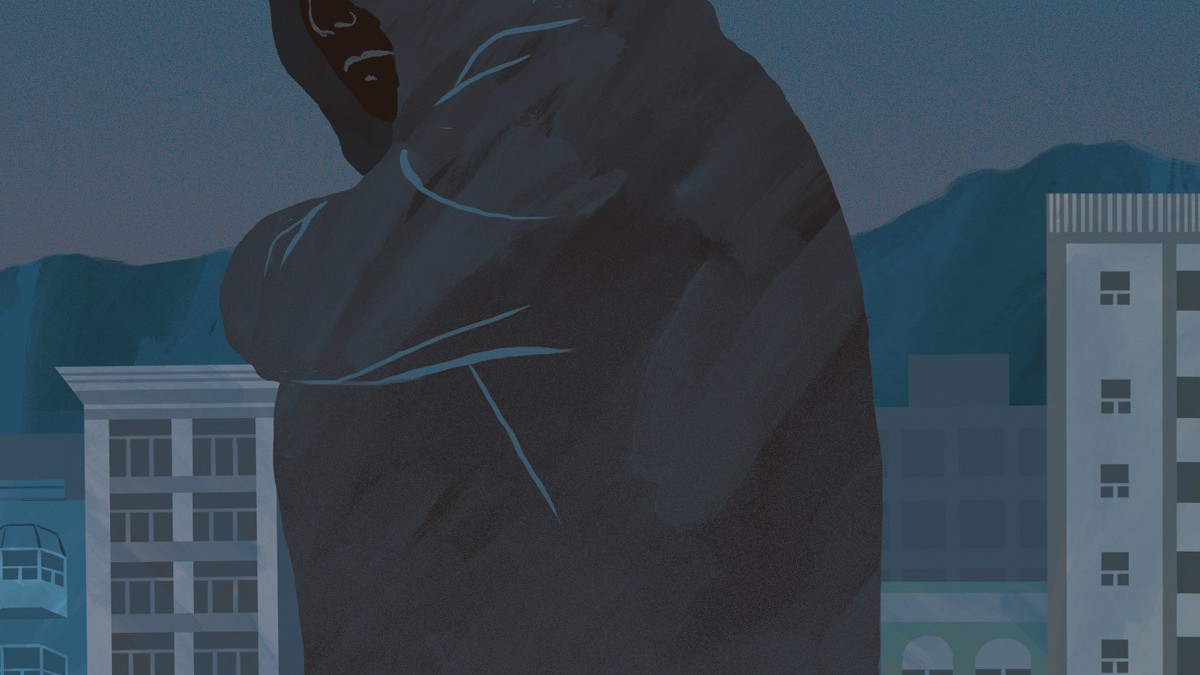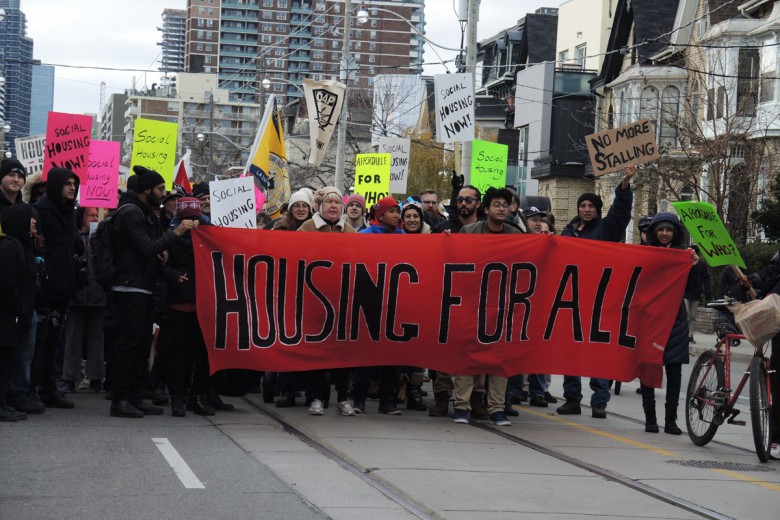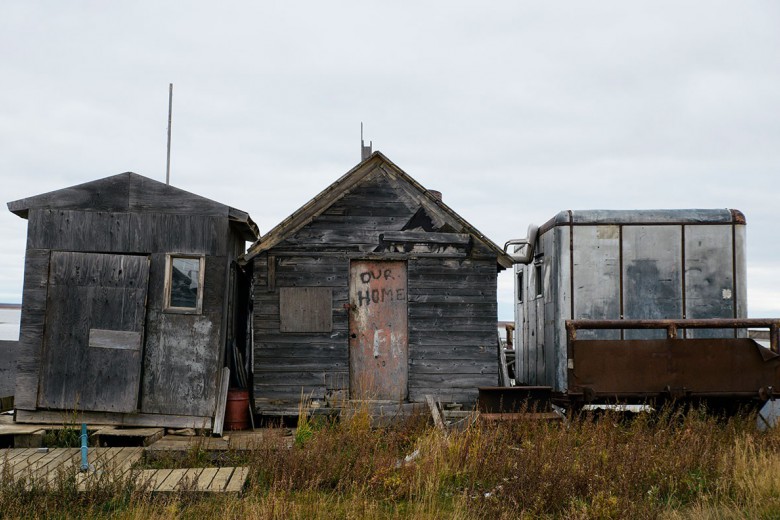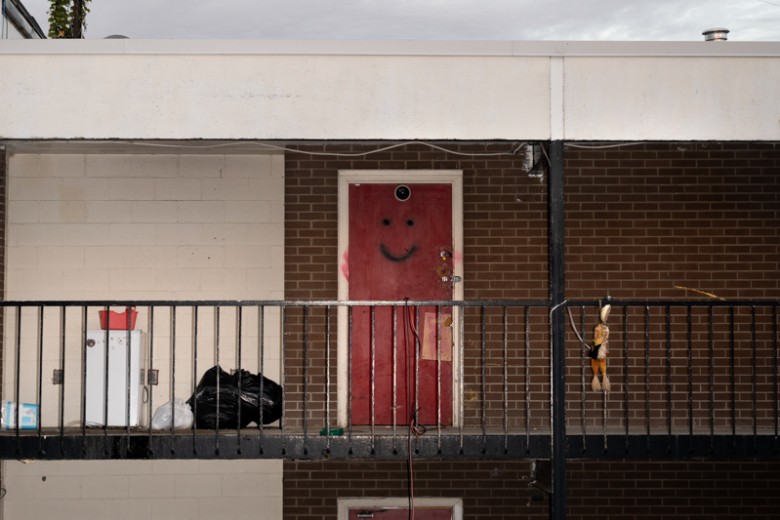In 2016, there were 978 illicit drug overdose deaths in British Columbia, 231 of which were in Vancouver. If the numbers hold, total illicit overdose deaths in B.C. will surpass 1,500 in 2017. Across the country, the number of opioid-related overdoses and deaths is staggering – and climbing. But numbers obscure the conditions that laid the foundation for such a crisis.
I’m standing at the corner of East Hastings Street and Campbell Avenue, waiting to cross. An ambulance speeds by with its sirens blaring and the man beside me mumbles, “Another overdose, I’ll bet.” We are in Vancouver’s Downtown Eastside (DTES), the epicentre of the opioid crisis in Canada. Like the man beside me, I am uncomfortably accustomed to the sound of wailing sirens.
Hastings Street in the DTES is marked by a memorial wall for overdose victims and naloxone kits hanging from the now-ubiquitous overdose prevention volunteers’ belt loops. These volunteers have been trained to inject naloxone into grapefruits and stand out with their orange safety vests; their eyes are watchful but tired. Stories of front-line burnout are common.
Overdoses and overdose deaths have surged in B.C. and across Canada, with no signs of stopping. The cause is understood to be the proliferation of illicit fentanyl. But the roots of this crisis run deeper.
While the fentanyl problem has been driven by profit, fluid borders, and over-prescribing practices, government policies at all levels have worsened it. Decades of budget cuts have contributed to rising living costs, a severe shortage of affordable housing, and woefully underfunded mental health and addictions services. Canada’s colonial and individualist underpinnings continue to promote isolation and addiction while laying blame at drug users’ feet. These conditions ensure that socially and economically marginalized people bear the brunt of this crisis. Nowhere is this more evident than in Vancouver and its DTES.
When fentanyl hit
Fentanyl is a synthetic opioid that is 50 to 100 times more potent than morphine. Before Health Canada approved OxyContin, a brand-name opioid, in 1996, opioids like fentanyl were used primarily to relieve debilitating pain caused by cancer and other illnesses. But OxyContin changed how opioids were prescribed. Purdue Pharma relentlessly marketed the drug to doctors while downplaying its addictive qualities. As doctors increasingly prescribed the drug even for moderate pain, opioid addiction and overdose deaths surged. OxyContin eventually found its way into illicit drugs like heroin, because it produced a quicker and cheaper high. When it was removed from the market in 2012, it left a vacuum for fentanyl to fill.
Now fentanyl is in all manner of drugs – cocaine, heroin, methamphetamine, and even in codeine, Xanax, and LSD. Once cut, a single kilogram of fentanyl can fetch $20 million on the street. It’s easier to smuggle than other illicit drugs because it can be ordered online or hidden in small packaging and delivered via mail or courier. It reaps a higher profit because so little is needed to produce a high. The drug itself is odourless and tasteless, making it hard to detect. Even more alarming is the recent emergence of powerful fentanyl analogues like W-18, carfentanil, and acrylfentanyl, which can even be resistant to a typical dose of naloxone, the “rescue shot” that brings people back from overdose.
The federal government’s official stance is that illicit fentanyl, created in and then illegally exported from China, made its way into the West Coast’s port cities and swept eastward. Its emergence exacerbated an already-worsening opioid problem, complementing prescription opioid misuse, over-prescribing, and pharmaceutical companies downplaying the addictive qualities of their products.
But there is a deeper version of events.
“I push really hard against calling this a drug issue … this isn’t a fentanyl crisis, it’s not an opioid crisis – it’s a poverty crisis,” says Gordon O’Connor, a social worker with the Victoria Cool Aid Society in Victoria, B.C. Although the opioid crisis crosses class, gender, race, age, and geographic lines, it is disproportionately affecting poor people. And although upwards of 80 per cent of overdoses and deaths occur among men, women drug users are in unique danger. Women face more limited access to harm reduction services and overdose prevention sites because of the threat of gendered violence, intimidation, and stigma. For women of colour, Indigenous women, women with disabilities, and queer and trans folks, these vulnerabilities are compounded.
“On an immediate level, there is a major emergency with opioid overdoses right now. And that requires an emergency response. Naloxone has saved dozens – hundreds – of lives,” O’Connor says. “But we have larger underlying problems with how we organize our communities to think about.”
A crisis of addiction
The roots of this addiction are in Canada’s social and economic foundation.
According to Dr. Evan Adams, chief medical officer at the First Nations Health Authority (FNHA) in B.C., addiction factors relate to trauma – including historical, intergenerational trauma – and the availability of illicit and prescribed opioids, proximity to health and addictions services, and social risk (the likelihood of ill health among people who are poor, racialized, and socially and geographically isolated).
Adams notes that Indigenous women are overrepresented in intravenous drug users not because they are more prone to using drugs, but because they often “come from places that are poor, where there’s risk, exploitation – and not just by their home communities, but by the dominant culture.” For Indigenous women, these threats are amplified by colonial and state violence. For instance, Human Rights Watch reports that Indigenous women calling in abuse and violence are not taken seriously or are victim-blamed by police because of addictions or personal history with drugs.
Increasing income inequality is also driving addiction. In Newfoundland and Labrador, where unemployment levels are high, Jessica Hackett, a harm reduction manager at the AIDS Committee of Newfoundland and Labrador (ACNL), notes that with such instability “comes high stress levels, and with high stress levels comes coping mechanisms such as alcohol or drugs.” She says that increased stress has produced an uptick in reports of domestic abuse, in women accessing shelters, and in women’s drug and alcohol abuse generally. “There’s a lot of uncertainty about the future of people’s families and their livelihood, and that’s creating a higher dependency on drug use.” Scenarios like these are playing out across the country. In Alberta, where oil prices have dropped off and unemployment is rising, an opioid crisis is also surging. “We’re on the dark end of 20 years of financial austerity, from both the federal and provincial governments,” says O’Connor. “And while they’re bragging about balanced budgets, one of the consequences that we deal with is … an overdose crisis.”
In other words, addiction isn’t the result of individual choices, but a product of colonialism and capitalism.
The Opioid Crisis By The Numbers
- In 2016, there were 978 illicit drug overdoses in B.C.
- Vancouver Fire and Rescue received 1,850 overdose calls in the Vancouver Coastal Health Region between January 1 and April 9, 2017. Of those, 1,273 were in the DTES.
- There are 24 overdose prevention sites in all of B.C. As of July 17, 2017, 1,450 overdoses had been prevented at these sites.
- First Nations are disproportionately harmed in the crisis, representing 3.4% of the B.C. population but 14% of all overdose events. First Nations people are five times more likely than non-First Nations to experience an overdose event.
Wars on drugs
Colonial, capitalist, and patriarchal violence has intensified regressive legislative responses to drugs and addiction for over a century.
When prime minister Wilfrid Laurier first criminalized opium in 1908, it was due to deep-seated racist fears and economic dependence on the cheap labour provided by non-British immigrant labourers. Not only did drugs like opiates and cocaine present a threat to white bourgeois moral order, but the sale and use of these substances presented an alternative means for immigrant labourers – mostly Chinese men – to make money and escape crushing working conditions.
In the mid-2000s, the newly elected Harper government began rolling out its “tough on crime” agenda. Under the National Anti-Drug Strategy, 70 per cent of funding was allocated to police enforcement, with just 17 per cent allocated to treatment, four per cent to prevention, and two per cent to harm reduction.
Under Harper’s government, funding for addiction treatment programs, Indigenous healing lodges, and restorative justice programs was hollowed out, while the drug enforcement budgets of the RCMP, Correctional Service Canada, Canada Border Services Agency, and the Parole Board of Canada bloated. Mandatory minimum sentences were introduced for non-violent drug offenders, and prison populations increased, with massive overrepresentation of Indigenous inmates and folks with mental health issues and addiction.
The Harper government’s approach penalized drug users instead of addressing the root causes of addiction. As Dr. Gabor Maté explains, this approach is the reason the war on drugs has been a colossal failure: “If tough enforcement, based on the idea that people are making a choice [to use drugs], were to work, we should’ve seen beautiful results by now. Instead, we’re seeing it as a public health tragedy and disaster.” Indeed, in Canada, it has been harm reduction, rather than police enforcement, that has mitigated this tragedy and disaster. At Insite, Canada’s first supervised injection site in Vancouver’s DTES, staff have intervened in 6,440 overdoses without a single death.
“If tough enforcement, based on the idea that people are making a choice [to use drugs], were to work, we should’ve seen beautiful results by now. Instead, we’re seeing it as a public health tragedy and disaster.”
In the face of the opioid crisis’ increasing severity, the federal Liberal government has amended the national drug strategy, which now makes it easier for cities to open supervised injection sites (there are new sites open in Montreal and Surrey, with more set to open), reinstates harm reduction as a key pillar, and moves substance use back from the Department of Justice into the realm of public health. Correctional Service Canada now provides naloxone kits and opioid substitution therapy (OST) to inmates.
The provinces are following suit: Newfoundland and Labrador now has both an opioid action plan and a mandatory safe-prescribing course that physicians must take. In B.C., the guidelines for clinical management of opioid use disorder have been updated to address the public health emergency.
But despite these recent shifts in policy, the lessons from Vancouver’s DTES show how political attitudes about drug use have worsened – and arguably led to – the opioid crisis.
Years of neglect
The DTES is notoriously known as Canada’s “poorest postal code.” In Vancouver, on unceded Musqueam, Tsleil-Waututh, and Skwxwú7mesh (Squamish) lands, it has been a working-class neighbourhood since the mid-19th century. Many of the residents then were employed in resource industries like logging and fishing, and later in the nearby canneries, meat-packing plants, sawmills, and metalworking shops. Because of the availability of cheap single-room occupancies (SROs), the neighbourhood was also home to a large immigrant and transient population. After jobs in the primary sector began to decline, the aging, unemployed, and workers with disabilities settled permanently in the area.
In the lead-up to the Expo 86 world fair, many residents were evicted from SROs, laying the groundwork for the homelessness that exists today. Likewise, the gradual deinstitutionalization of Riverview Hospital by the early 1990s evicted many psychiatric survivors/patients struggling with mental illnesses who were seeking support. In B.C., welfare funding rates have been stagnant at $610 per person per month since 2007, though the provincial NDP government promised to boost the rates to $710 as of September 20, 2017 (the average rent for a privately owned SRO is $548 per month).
The Urgent Need for Housing*About 1 in 18 people in the DTES is homeless
*To provide adequate housing to the residents of the DTES, 5,000 units of social housing would have to be built in the neighbourhood.
*Social assistance has stagnated at $610 from 2007–2017. With an average SRO rent of $548, recipients have only $62 a month (about $2 a day) left over for other expenses (food, laundry, transportation).
*In 2016, 510 unaffordable housing units (condos, market rental, and social housing with rents higher than the welfare shelter rate) were built, compared with 11 welfare rate units.
Source: Carnegie Community Action Project’s 2016 Hotel Survey and Housing Report
In the early 1980s, the federal government’s Business Immigration Program began attracting international investment to Metro Vancouver’s real estate market, spurring speculation and out-of-control, trans-Pacific real estate growth. The federal government’s lack of will to fund social housing has meant that there isn’t enough safe and affordable housing for DTES residents, leaving many with limited options: homelessness or occupancy in abject SRO hotel rooms, often managed by slumlords. Creeping gentrification means that rents are increasing, and affordable amenities are being replaced with trendy shops and restaurants. According to the 2006 census, 53 per cent of households in the DTES fall below the low-income cutoff, compared to 21 per cent citywide.
The federal government’s lack of will to fund social housing has meant that there isn’t enough safe and affordable housing for DTES residents, leaving many with limited options.
But the DTES is also notable for its remarkable political organizing and community building. Organizations like the Carnegie Community Action Project (CCAP) and Pivot Legal Society fight for housing justice, police accountability, and human rights for drug users and homeless folks.
In the late 1990s, Canada’s first drug user union – the Vancouver Area Network of Drug Users (VANDU) – organized in response to rising HIV, hepatitis C, and drug overdose rates. According to co-founder Ann Livingston, from its inception VANDU recognized that women drug users face particular challenges in the DTES.
When VANDU began holding meetings, Livingston noticed that women wouldn’t show up and remembers thinking, “This is sort of puzzling […] We’re paying $5, we’ve got a snack, what’s going on?” The women told her they couldn’t get in because they owed drug dealers money. Not only did Livingston pay off dealers to get women in the door, but VANDU has worked to centre women’s leadership and has been inclusive of all women who use drugs, especially sex workers, who are sometimes turned away by other organizations.
VANDU was instrumental in offering harm reduction services to its members when governments would not. Since then, VANDU, DTES residents, drug users, and their allies have fought for improved access to harm reduction services like Insite. What’s more, Livingston and activists Sarah Blyth and Chris Ewart introduced pop-up injection sites, in defiance of restrictive federal laws.
Women’s leadership in the community and at Vancouver Coastal Health (VCH) is driving new women-only drug services in the DTES. Bonnie Wilson, director of Home Support, Complex Rehab and Supported Housing at VCH says they realized a few years ago that women in the DTES, especially drug users, weren’t getting the health care or housing they needed, often feeling unsafe in mixed-gender or colonial spaces. In response, VCH partnered with Atira Women’s Resource Society to open a women-only injection site and recruited a women’s intensive case management team; now they are creating a women’s mobile health van. Activist and drug user Tracey Morrison,* president of the Western Aboriginal Harm Reduction Society (WAHRS), encouraged women in the community to use the new services: “We have to get the word out that there’s a place [women drug users] can go. Because they don’t feel safe anywhere else.”
Outside of the DTES, Chrysalis Society, a substance-use recovery organization led by women that is uniquely specialized and trauma-informed, works to ensure that women have a place to stabilize. Unlike many substance-use treatment centres, Chrysalis does not make exceptions for social status or profit from privately funded care: “We recognize classism as being part of trauma-informed care,” says executive director Shannon Skilton. Chrysalis enables women to remain on methadone and benzodiazepines throughout treatment, and has purposely located its services outside of the DTES for the well-being of its residents. As Wilson notes, some women in the DTES “feel victimized, they’ve experienced gender violence and they don’t want to be there, but they feel trapped because of housing affordability and services.”
From its inception the Vancouver Area Network of Drug Users recognized that women drug users face particular challenges in the DTES.
This is most evident in the national crisis of missing and murdered Indigenous women. Police, emboldened by the war on drugs, can make arrests based on the belief a person has committed an offence like drug possession; women who use drugs are especially vulnerable. There are system-wide reports of police violence, and of police presuming the criminality of Indigenous women and ignoring histories of trauma. In the highly policed DTES, where many women drug users are Indigenous, poor, and dealing with mental health issues, this yields high levels of criminalization and police abuse.
The RCMP’s chief superintendent, Brian Cantera, told the CBC last year, “We’re simply not going to arrest our way out of this [opioid crisis]. It’s too big an issue. It comes back to a multi-pronged approach, a multi-pillar approach, where you talk about prevention, education, harm reduction and enforcement.”
I ask Morrison whether this approach to treating the opioid crisis had traction on the ground: “It’s bull,” she says. Morrison has heard from Indigenous youth that they’re being harassed by police and she is working to find a camera to film any altercations she sees. Livingston reports seeing an older woman arrested for possession of one rock of crack cocaine: “I wanted them to let her go, let her go! Let her go! One rock?! Your chief of police said you’re not arresting for possession!”
Beyond the void
Despite ceaselessly climbing death tolls and the “sad song of sirens,” as Morrison calls it, some are finding reason to be hopeful. “I do trend toward extreme optimism so I don’t want to oversell this,” says Andrea Reimer, a Vancouver city councillor, “but I do believe that we are at a moment when this could be, as dark as it feels, the catalyst that pushes us through the barrier to prescribing and legalizing different drugs.” And movement on that front is already occurring.
In May, federal Health Minister Jane Philpott publicly came out in support of prescription heroin. In July 2017, Health Canada cleared medical heroin under the name diamorphine for import to B.C. for use in opioid addiction treatment. Prescription heroin is a well-established treatment in countries like Denmark, Germany, and Switzerland, and would be one highly effective tool in the fight against fentanyl and death. It would also be an important step back from the war on the drugs.
While activists and community members on the ground are still fighting just to keep pace, their work has been subversive, necessary, and galvanizing. Opening unsanctioned pop-up injection sites has saved countless lives and illuminated damaging federal drug policies. Livingston remarks that as long as governments keep moving slowly to stem the crisis and endanger the lives of drug users, she and other overdose prevention volunteers will engage in civil disobedience to save lives.
The opioid crisis will eventually require big-picture investments. Presently, people are dying, so harm reduction – better access to naloxone and prescription heroin – is immediately necessary. “But what’s not being addressed right now,” says O’Connor, “are the underlying causes of this addiction epidemic.” At some point, if we are able to shift out of emergency response mode, there will have to be an honest discussion around mental health, housing, and addictions services, as well as structural racism and misogyny. This level of national introspection will require both an examination of the systems of deprivation that Canada is built on and a commitment to liberation for all those who continue to suffer for it.
*Tracey Morrison passed away in July 2017, as this article was being written. The author wishes to express her gratitude to Tracey for her activism, advocacy, and unrelenting support for drug users and folks living in the DTES. Briarpatch also wishes to clarify that Tracey was president of WAHRS; the print article notes that she was a board member.







